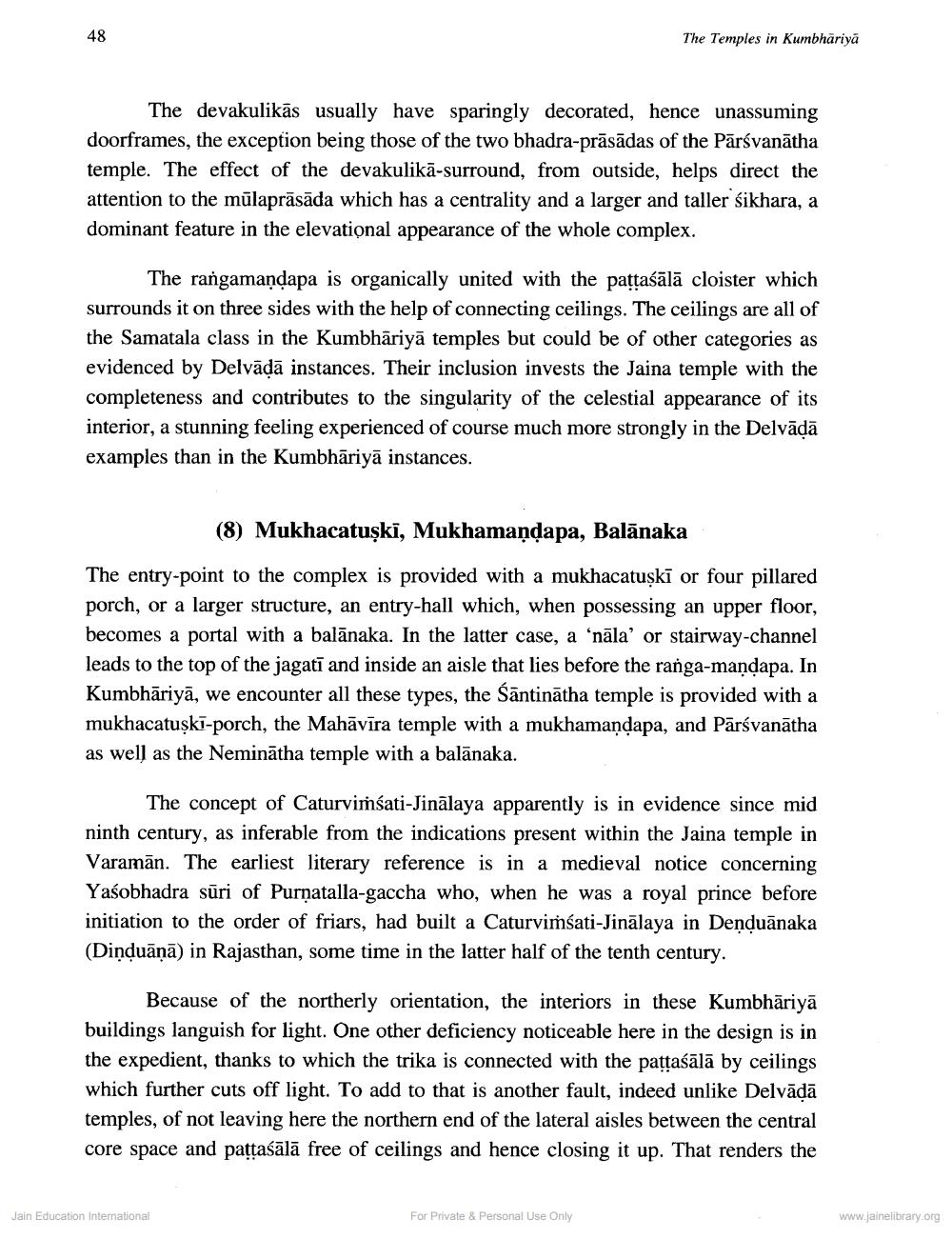________________
The Temples in Kumbhariya
The devakulikās usually have sparingly decorated, hence unassuming doorframes, the exception being those of the two bhadra-prāsādas of the Pārsvanātha temple. The effect of the devakulikā-surround, from outside, helps direct the attention to the mūlaprāsāda which has a centrality and a larger and taller śikhara, a dominant feature in the elevational appearance of the whole complex.
The rangamandapa is organically united with the pattaśālā cloister which surrounds it on three sides with the help of connecting ceilings. The ceilings are all of the Samatala class in the Kumbhāriyā temples but could be of other categories as evidenced by Delvādā instances. Their inclusion invests the Jaina temple with the completeness and contributes to the singularity of the celestial appearance of its interior, a stunning feeling experienced of course much more strongly in the Delvādā examples than in the Kumbhāriyā instances.
(8) Mukhacatuṣki, Mukhamaņdapa, Balānaka
The entry-point to the complex is provided with a mukhacatuskī or four pillared porch, or a larger structure, an entry-hall which, when possessing an upper floor, becomes a portal with a balānaka. In the latter case, a ‘nāla' or stairway-channel leads to the top of the jagatī and inside an aisle that lies before the ranga-mandapa. In Kumbhāriyā, we encounter all these types, the śāntinātha temple is provided with a mukhacatuṣkī-porch, the Mahāvīra temple with a mukhamandapa, and Pārsvanātha as well as the Neminātha temple with a balānaka.
The concept of Caturvimšati-Jinālaya apparently is in evidence since mid ninth century, as inferable from the indications present within the Jaina temple in Varamān. The earliest literary reference is in a medieval notice concerning Yaśobhadra sūri of Purņatalla-gaccha who, when he was a royal prince before initiation to the order of friars, had built a Caturvimśati-Jinālaya in Denduānaka (Dinduāņā) in Rajasthan, some time in the latter half of the tenth century.
Because of the northerly orientation, the interiors in these Kumbhāriyā buildings languish for light. One other deficiency noticeable here in the design is in the expedient, thanks to which the trika is connected with the pattaśālā by ceilings which further cuts off light. To add to that is another fault, indeed unlike Delvādā temples, of not leaving here the northern end of the lateral aisles between the central core space and pattaśālā free of ceilings and hence closing it up. That renders the
Jain Education International
For Private & Personal Use Only
www.jainelibrary.org




